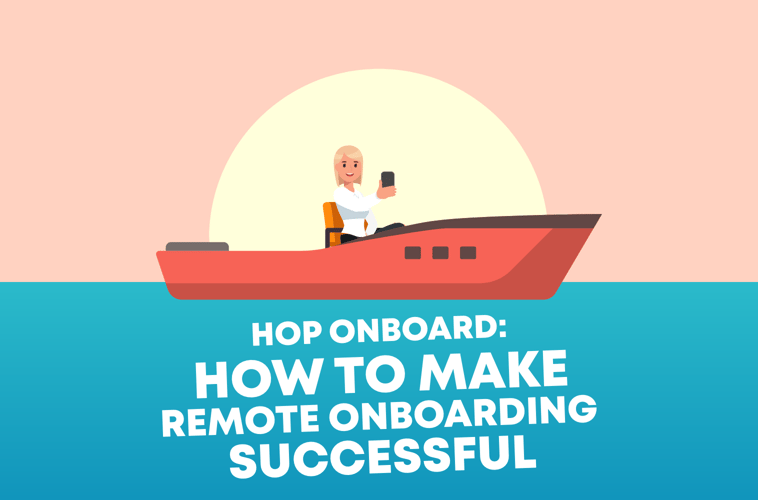Tip 1: Understand the value of onboarding
22 percent of staff turnover occurs within the first 45 days
Put simply, if you don’t successfully on-board your new hires you’ll take longer to make them productive and you’ll be much more likely to lose them. A study by leadership consultants The Wynhurst Group shows how important it is to build positive first impressions. As reported by Sequoia Capital, Wyndhurst found: “4 percent of new employees leave a job after a disastrous first day; most decide whether they feel ‘at home’ in the first three weeks at a new job; and 22 percent of staff turnover occurs within the first 45 days of employment.”
A PricewaterhouseCoopers (PWC) paper saysnearly one in 3 recruits leaves within a year and this number has been steadily increasing. PWC’s report, Best practices for retaining new employees: New approaches to effective onboarding ,concludes that: “An effective onboarding process isa worthwhile investment that can help companies transform newly hiredemployees into dedicated members of the workforce and reduce the costsassociated with turnover.”
PWC estimates the cost of new hire turnover is between 50% and 150% of an employee’s annual salary. If you lose a new hire early on you’ll never recover the hiring cost, and you’ll be exposed to the cost all over again to hire a replacement for the failed new hire. Even worse, losing new hires is a bad look for businesses, casting doubts on the capabilities of managers and often leading to low morale and instability.
Tip 2: Get a structured onboarding process in place
At a minimum, your onboarding process should: handle all admin tasks related to the hire (e.g. payroll information, policy manuals etc.); allocate required tools (e.g. technology); introduce the new hire to immediate team members; explain the job, KPIs and the company culture; connect the hire to a buddy or mentor; and offer ongoing help and advice during the probation period and beyond. The process should be documented and managers should be trained on how to implement it.
Employees who go through structured onboarding are 58% more likely to remain with the organization after three years.
Some companies blame lack of budget for the absence of an onboarding process, but the ROI on effective onboarding can be massive. One of the paybacks is retention. The Wynhurst Group found when employees go through structured onboarding they are 58% more likely to remain with the organization after three years. This shouldn’t be a surprise. Smart businesses who demonstrate to new hires from day one that they areorganised, think about and care for staff, are welcoming and supportive, and want the experience to be successful both for new hire and company are starting the relationship off on the best footing.
Tip 3: Continually measure and improve the onboarding process
When you have a process in place keep improving it. Monitor key data such as time to proficiency on important tasks, new hire retention and under-performance to provide clues about what is working well and what needs improvement. Run brief employee satisfaction surveys at 10, 30, 60 and 90 days to understand how well the newbie is integrating and use as a metric for individual departments and teams as well as the whole organisation.
Survey newbies who go through onboarding to ask about their experience and suggested improvements. You’ll get valuable advice from the process’s “customers”, you’ll provide an opportunity for newbies to make an early contribution to the business, and you’ll demonstrate your company’s openness to ideas from even the most recent of hires.
Survey current staff about positive onboarding experiences at other companies and keep informed about best practice onboarding initiatives of employers of choice. Beg, borrow or steal whatever is likely to make a big impact.
Tip 4: Wow your new hires during onboarding
Recruits often complain onboarding is dull and boringaccording to international HR thought-leader Dr John Sullivan. In this excellent bloghe urges hiring managers to go past the basics and reinvent onboarding as an important step towards motivating newbies, improving retention and operational effectiveness. He cites data from consulting firm BCG that reveals onboarding to have the second highest business impact of all HR practices (recruiting is #1), and points to businesses like Facebook,Google, EY and IBMwho have analysed the data and “discovered the high economic value resulting from adding bold, exciting and high-impact new features that I call ‘extreme onboarding’.”
Sullivan recommends several ways to increase the wow factor including: “gamification, providing mentors, extending the duration of onboarding, applying technology to onboarding and starting onboarding activities before the first day of work.” Whichever elements you add to your onboarding process aim to provide a memorable and enjoyable experience.
Tip 5: Use technology to aid ‘pre-boarding’ and reduce onboarding costs
As Dr Sullivan suggests, “applying technology to onboarding and starting onboarding activities before the first day of work” can provide your business with competitive advantage in the recruitment market.
Use HR apps to automatically generate and deliver electronic contracts and forms to candidates that they can view on mobile devices and use digital signing technology to complete and return electronically. Slick processes like this can be a crucial differentiator where candidates are weighing up more than one offer. Your company comes across as modern and efficient compared to competing recruiters who are still dealing in paper offers. Integration between onboarding and recruitment modules also saves double handling and costs as candidate data can be accessed directly by the onboarding module.
Online portals and workflow tools help recruits interact with a new employer prior to the official start date. Some HR apps allow new recruits to register personal and tax information etc. remotely. These portals also allow recruits to view content such as orientation and training videos in advance of their first day at the new job., This gets time-consuming and boring tasks out of the way so that the first few days on the job can be spent on more productive activities like connecting with new colleagues and customers.
HR apps also save time for HR and recruiting managers by automatically generating onboarding packs for specific job titles that could otherwise take many hours to compile.
You can also provide new hires with access to company social tools and introduce them to work colleagues in advance of their first day at the office.
Tip 6: Remember onboarding is more than just training
Many businesses think they’re doing a good job on onboarding by providing lots of training for new hires about the tasks they are to perform. But that training is just one element of onboarding. Michel Falcon, founder of customer experience business Experience Academy, provides a clear distinction: “Employee onboarding is the design of what your employees feel, see and hear after they have been hired. Often, companies confuse onboarding with training. While training does have a role within the onboarding it doesn’t represent the entire scope of the process.”
In designing your onboarding process think about what new hires will “feel, see and hear” while undergoing it and be sure to build in lots of enjoyable experiences that help connect the new hire to their team and the company. As Falcon notes, think of new hires as customers and adopt a customer experience mindset to ensure they have a great early experience of your company.
Tip 7: Make new hireoutcomes an important measure of managers
You must have 100% commitment from managers to run great onboarding for every employee. Like many things in business the best way to ensure this commitment is to include onboarding performance as a key measure in managers’ performance assessments. Use hard data about the productivity and retention of new hires to provide feedback to managers about how they stack up against company targets and against their peer group. Identify the managers who perform best on onboarding metrics and encourage them to share their approach in order to improve the process.
Tip 8: Do the little personal things that show you care
Making a new hire feel comfortable and welcome often comes down to personal interactions that can be built into your process. These include:
- The hiring manager phoning the new hire the day before s/he starts and clarifying exactly where and when the new hire is to arrive. Use the opportunity to ask if they have any specific questions or concerns about their first day.
- The hiring manager being at the same location on the new hire’s first day to welcome them and introduce them to other team members.
- Hosting a welcome lunch for the new hire with the immediate team – this is a cool way to encourage informal chats. No need to go anywhere fancy, just go somewhere your team normally goes.
- The hiring manager having a brief check-in each day to answer questions, provide feedback and encouragement, and generally build relationship with the new hire. Reduce the frequency after you’re comfortable the newbie is settling in well.
There are many more small things that can make an effective onboarding program even better. I’d love to hear your experience of onboarding programs that rock.







Blog comments